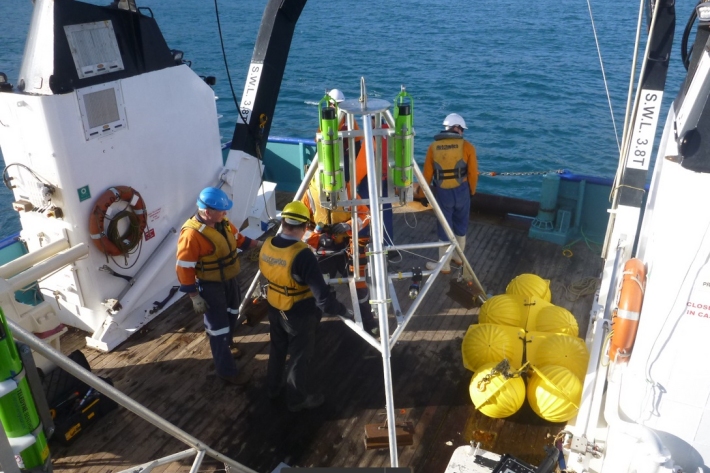-

Underwater magician
Feature story28 December 2018Based at Bream Bay, Whangarei, Crispin Middleton is also an acclaimed underwater photographer and the recipient of numerous photography awards. His work regularly appears in New Zealand Geographic, dive magazines, scientific journals and conservation/ government documents. -

Ross Sea Environment and Ecosystem Voyage 2019
Research ProjectThe Ross Sea region is vital to the future of the Antarctic ecosystem. -

Scientists spy on baby snapper in Hauraki Gulf
News article06 November 2018NIWA researchers are out on the Hauraki Gulf this week to find out more about the nurseries of young snapper. -

Treasure found on Northland beach
Media release19 October 2018A chance find by a woman walking on a Northland beach is now helping scientists learn more about mako sharks. -

Migratory fish get helping hand
Feature story03 September 2018Humans don't always make it easy on fish to get where they are going. New Zealand's first national set of Fish Passage Guidelines – co-developed by NIWA - is expected to help. -

Pelagic shark risk assessments
Research ProjectNIWA has developed a new method for spatially-explicit, quantitative, sustainability risk assessment of pelagic shark population. -

Shortfin mako sharks
Research ProjectSharks are vulnerable to overfishing because of their low reproductive rates and often low growth rates. Most pelagic sharks fall near the middle of the shark productivity scale, and there is concern that catching too many of them could lead to population depletion. In New Zealand waters, mako sharks are the second most commonly caught shark species (after blue sharks) on tuna longlines. -

Shark conservation one watermelon at a time
Media release02 July 2018Warrick Lyon is heading to the Marshall Islands to teach fisheries observers how to tag sharks. -

NIWA undertakes an ambitious, complex seabed experiment
Media release07 May 2018One of the most challenging scientific underwater experiments ever attempted by NIWA is taking place this month on the Chatham Rise. -

Blog: The inhabitants of the twilight zone of the open-ocean - 15 March
15 March 2018
Think about a futuristic world where at night time, people use different kind of self-propelled vehicles to hover across cities, illuminating the skies with different colours and shapes, while transiting around them. -

NIWA expertise contributes to healthy hoki fishery
Media release28 February 2018When NIWA fisheries scientist Richard O’Driscoll went to sea earlier this year, he and his team measured so many fish that laid end to end, they would have stretched for 31km. -

Scientists send snapper to boot camp
Media release19 February 2018At a laboratory just outside Whangarei, scientists are putting very young snapper through comprehensive physical testing - including a full medical check-up involving smell, hearing, vision, and even anxiety testing.

